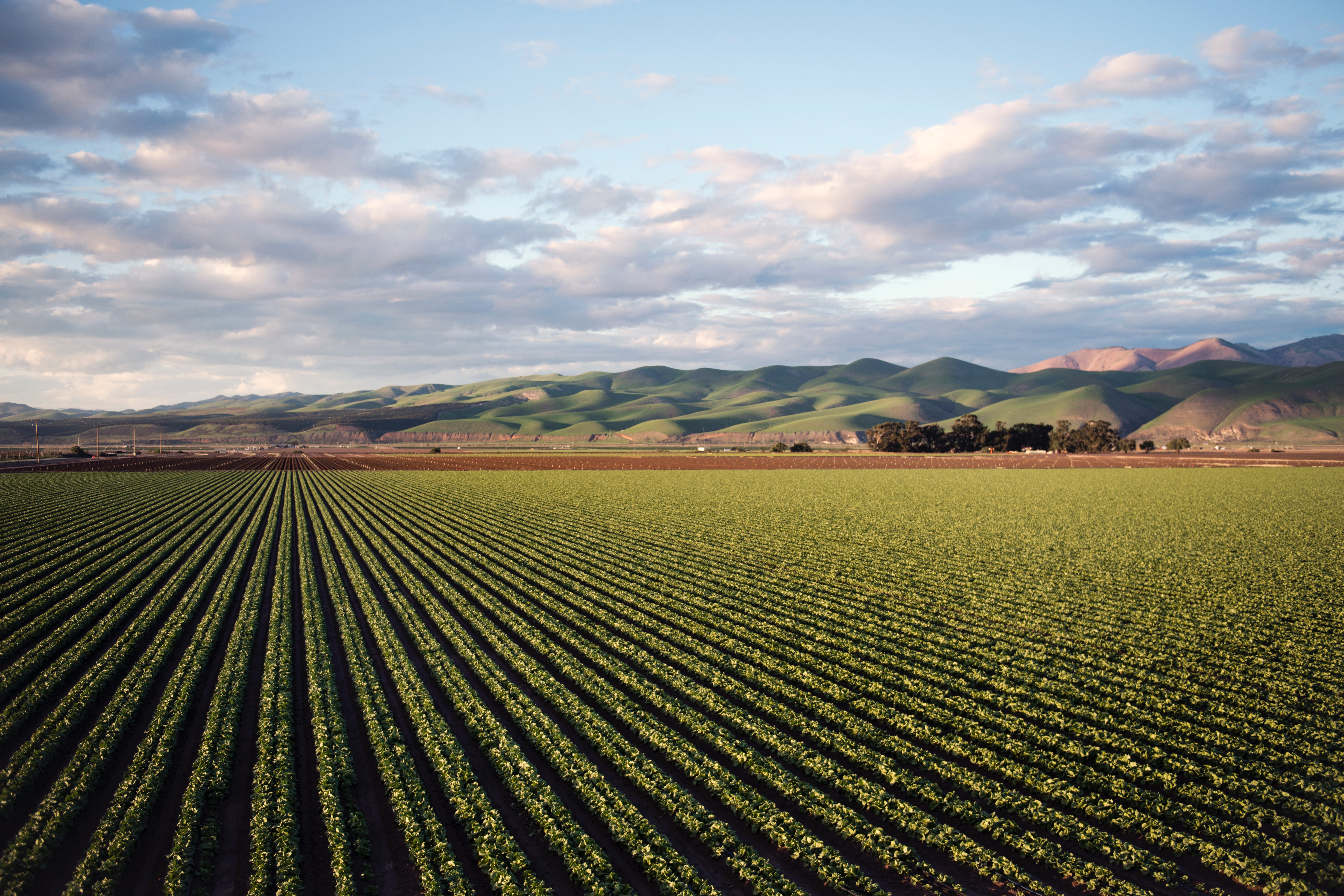REITs (Real Estate Investment Trusts) are one of the most common ways for investors to make passive income in real estate. Farmland REITs provide an easy route for investors to have direct exposure to farm land income and returns. Historically, farmland has been a great hedge against inflation and has a lower volatility portfolio compared to other asset classes.
Before Farmland REITs emerged, it was difficult for investors to gain exposure to farmland as you would have to buy a plot of land. This can costs hundreds of thousands and upwards into the millions. The average person could not afford this route, so they would often avoid the asset class altogether.
However, there are now many new ways to gain exposure to farmland, such as Farmland Crowdfunding Platforms.
Let’s take a closer look at the advantages, risks and best Farmland REITs to invest in for 2022 and beyond!
What are Farmland REITs?
A REIT or (”real estate investment trust”) are companies that are created for the purpose of investing in income-producing assets (i.e. Real Estate). The sole purpose of REITs are to provide investors with exposure to real estate cashflows and capital appreciation through the issuance of dividends.

By investing in Farmland REITS, investors will have direct exposure to farmland, without actually owning the underlying asset. This can be a very attractive, passive way of investing in farmland. As you are not subject to the large upfront costs and maintenance that it requires to own farmland.
Investors are therefore able to take advantage of appreciating and or declining equity of the farmland without the extra risks that it may carry to own the asset outright.
It is important that investors consider the tax implications of investing in REITs in order to determine if its the right fit for their personal financial situation.
Different Types of REITs
-
Equity REITs: Equity REITs are comprised of owner managed income-producing real estate. This means that revenues are primarily generated through cashflow from operations.
-
Mortgage REITs: Mortgage REITs involve lending money to real estate owners/operators through mortgage or loans. Earnings are then generated through net-interest margin.
-
Hybrid REITs: Hybrid REITs utilize the investment strategies of both equity and mortgage REITs.
How to Invest in Farmland REITs
Now that we are aware of the different types of Farmland REITs, you might be wondering how you can get starting with investing?
REITs can be easily bought on stock exchanges such as the NYSE, Nasdaq and TSE. Investors can get started with as little as $100, and sometimes even less with fractional trading.
If you’re a Canadian you can use a brokerage like Wealthsimple Trade, or if you’re in the U.S. you can use brokerages like Etoro, Robinhood or Public.
Best Farmland REITs
Now let’s take a look at the Best Farmland REITs to invest in for 2022!
1. Gladstone Land (NASDAQ: LAND)

Gladstone Land is a Farmland REIT that comprises a farmland portfolio of income-producing assets located in the United States. It was established in 1997, and currently has total net assets of $876 million.
Their philosophy involves buying high-quality farm land for the purpose of leasing them out to farmers who has a strong operating history and a deep understanding of farming resources.
Gladstone Land owns farmland all across the United States in with a total portfolio value of approximately $1.5 billion.
The REIT owns 164 farms comprised of approximately 113,000 acres of farmland across 15 U.S. states. As of May 10th 2022, their occupancy rate stands at 100% with the weighted average of their lease terms of 6.5 years.
Gladstone offers farmers and land owners with the following options:
- Farmers Selling Land: Long term sale leaseback arrangements allowing farmers to free up capital and improve their operations.
- Farmers Who Lease Land: Gladstone can purchase the farms and rent them to the farmers on flexible lease terms.
- Sellers Who Do Not Farm: Offering a cash purchase of the land, while keeping existing tenant-farmers (or finding new ones).
LAND Returns
Land pays out its dividends to its shareholders on a monthly basis and has returned 57.77% to its shareholders since its Initial Public Offering (IPO) in January 2013. The REIT has a current dividend yield of 2.31%, which is very attractive when compared to other Farmland REITs in the space.
If you’re looking for an attractive REIT investment that pays monthly dividends and has exposure to U.S. farmland, LAND should be the first place to look!
2. Farmland Partners (NYSE: FPI)

Farmland Partners is a farmland REIT that comprises a farmland portfolio of income-producing assets located throughout North America. It was established in 2013, and currently has total net assets of $1.1 billion.
Their investing philosophy involves purchasing, leasing and managing high quality farmland throughout North America.
The REIT owns over 300 farms comprised of approximately 186,000 acres of farmland across 19 U.S. states. As of June 2022, Farmland Partners has over 100 tenants with a 0% vacancy rate.
Farmland Partners ESG Strategy:
- 97% of Tenants Invest in Soil Health
- 66% of Tenants Engage in Conservation Practices
- 5 Solar Energy Projects
- 3 Wind Energy Projects
- 100 M/H+ of Generation Capacity
- 16 Future Renewable Energy Projects in the Pipeline
FPI Returns
Land pays out its dividends to its shareholders on a quarterly basis and has returned 9.94% to its shareholders since its Initial Public Offering (IPO) in April 2014. The REIT has a current dividend yield of 1.68%.
Farmland Partners is more on the expensive side when compared to Gladstone Land and distributes its dividend quarterly instead of monthly. It’s important to consider valuation metrics like forward p/e, Price to sales ratio and balance sheet. Investors should also weigh which REITs investing philosophy better suits their overall risk and investment strategy!
Pros and Cons of Investing in Farmland REITs
With any investment that you make, there are going to be both positives and negatives. It is necessary that before you make an investment that you do the required research in order to make more informed financial decisions. Below we will consider the pros and cons of investing in Farmland REITs.
Pros:
- Rising Demand/Shrinking Supply: Food production is one of the most pivotal societal needs. While food insecurity continues to rise, agricultural land per capita continues to decrease.
- Diversification: A great way for investors to diversify their stock investment portfolio. REITs tend to be uncorrelated to other assets such as stocks, bonds and cryptocurrency. They also often do well in a recession.
- Stable Returns: Farmland has outperformed the S&P 500 over the last 20 years returning 12.1% annually, compared to just 9.2%.
- Consistent Cash Flows: Farmland REITs offer investors more predictable and stable cash flows as there will always be demand for food.
- Up-tapped Institutional Potential: Farmland is one of the largest commercial real estate sectors ($2.7 Trillion) with the lowest institutional adoption.
Cons:
- Tax Implications: Earned dividends are taxed as regular income.
- Growth: Farmland REITs are not a hyper growth sector, therefore you cannot expect the same returns as a technology company.
- Market Risks: You are subject to market and sector risks. If an issue arises that affects the farming sector certain government regulations could significantly impact the stock price.
- Vacancy Rate: Investors cannot control the vacancy rate and certain tenant risks that could impact the REITs cash flows. The sole responsibility of managing the farms is entirely dependent on the management and their execution.
Disclosure: The author holds no position mentioned in this article. Freedom Stocks has a disclosure policy.









